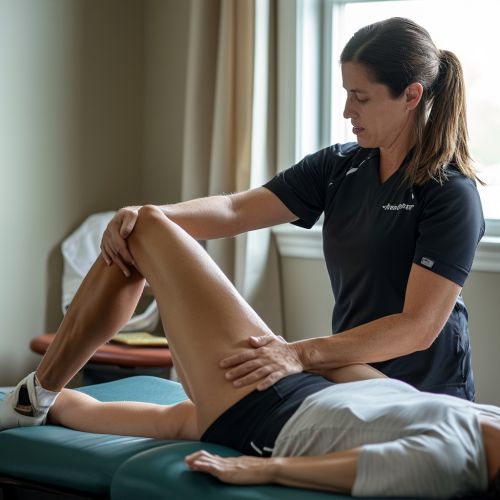Proprioceptive Neuromuscular Facilitation
Overview
Proprioceptive Neuromuscular Facilitation (PNF) is a technique of therapeutic exercise that promotes motor function and facilitates muscular performance. The technique was developed in the 1940s by Dr. Herman Kabat, a neurophysiologist, and Margaret Knott, a physical therapist read more. PNF is based on principles of human neurology and kinesiology, and it is used to improve muscle strength, flexibility, and coordination.
Principles
PNF is grounded in the understanding of the body's neuromuscular system, which includes the muscles and nerves. The technique uses the body's proprioceptive system, which is the sensory system that provides feedback about the position and movement of the body in space. PNF uses this feedback to improve the body's ability to perform coordinated movements.
The principles of PNF include:
- Irradiation: This principle states that the intensity of muscle contractions can be increased by recruiting adjacent muscle groups. This is achieved through the use of specific patterns of movement that engage multiple muscle groups.
- Reciprocal Inhibition: This principle involves the use of one muscle group to facilitate the relaxation and lengthening of the opposing muscle group. This is achieved through the use of specific patterns of movement that engage both the agonist and antagonist muscles.
- Autogenic Inhibition: This principle involves the use of the body's natural reflexes to facilitate muscle relaxation. This is achieved through the use of specific patterns of movement that engage the muscle's Golgi tendon organ, a sensory receptor that responds to muscle tension.
Techniques
PNF techniques are designed to promote the development of motor skills and improve muscular strength and flexibility. These techniques involve the use of specific patterns of movement that engage multiple muscle groups. The techniques include:
- Contract-Relax (CR): This technique involves the patient contracting the muscle group to be stretched against a resistance provided by the therapist. The muscle is then relaxed and stretched.
- Hold-Relax (HR): This technique involves the patient holding the muscle group to be stretched in a static position against a resistance provided by the therapist. The muscle is then relaxed and stretched.
- Slow Reversal-Hold-Relax (SRHR): This technique involves the patient moving the muscle group to be stretched through a range of motion against a resistance provided by the therapist. The muscle is then held in a static position, relaxed, and stretched.
Applications
PNF techniques are used in a variety of clinical settings to improve motor function and facilitate muscular performance. These include:
- Physical Therapy: PNF is commonly used in physical therapy to improve muscle strength, flexibility, and coordination in patients with a variety of neuromuscular conditions.
- Sports Training: PNF is used in sports training to enhance athletic performance by improving muscle strength, flexibility, and coordination.
- Rehabilitation: PNF is used in rehabilitation to improve motor function and facilitate muscular performance in patients recovering from injury or surgery.
Research
Research on PNF has shown that it can be effective in improving muscle strength, flexibility, and coordination. However, more research is needed to fully understand the mechanisms underlying these effects and to determine the optimal protocols for the use of PNF in different clinical settings.
See Also


